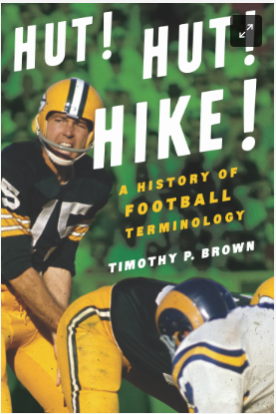Bryan Trottier The Hub of the Islanders' Dynasty
Early Career and Blossoming Talent (1974-1979):
-Drafted 22nd overall by the New York Islanders in 1974, Trottier quickly adapted to the professional game. His intelligence, vision, and passing prowess made him a perfect complement to the Islanders' burgeoning offensive firepower.
-Playing alongside Mike Bossy and Clark Gillies on the famed "Trio Grande" line, Trottier thrived under coach Al Arbour's defensive system. His ability to control the puck and create scoring opportunities for his linemates was instrumental in the Islanders' rise to prominence.
Dominant Dynasty and Championship Runs (1979-1983):
-The Islanders' golden age coincided with Trottier's peak years. Between 1980 and 1983, the team captured four consecutive Stanley Cup championships, establishing themselves as a dynasty. Trottier's leadership on the ice and his ability to perform under pressure were crucial to their success.
-He won the Art Ross Trophy (awarded to the league's leading scorer) in 1979 and the Conn Smythe Trophy (awarded to the playoff MVP) in 1980, solidifying his place as one of the game's elite players.
A Consistent Force and Later Career (1983-1999):
-Even after the Islanders' dynasty ended, Trottier remained a force to be reckoned with. He continued to be a prolific scorer and a leader on the ice, helping the Islanders reach the Stanley Cup Finals again in 1984.
-In 1994, Trottier sought a new challenge and was traded to the Pittsburgh Penguins. He won two more Stanley Cup championships with the Penguins in 1991 and 1992, showcasing his adaptability and ability to contribute to winning teams.
-Trottier retired in 1999 after a remarkable 18-year career, leaving behind a legacy of excellence.
Gary Carter Catcher for the Ages
Baseball purists revere him, and fans remember the thunder of his bat. Gary Carter, nicknamed "The Kid" for his youthful exuberance throughout his long career, was a cornerstone catcher not just for the New York Mets, but for the entire game. This article delves into the life and legacy of this iconic figure, exploring his defensive mastery, clutch hitting, and the impact he left on the sport he loved.
A great YouTube video of Gary Carter's MLB highlights. Born April 8, 1954, in Culver City, CA, was Baseball Hall of Fame catcher Gary Carter.
Gary Carter besides Catcher played a bit of Right Field, First Base, Left Field, and Third Base, wearing the number 8 on the Montreal Expos (1975-84 and 1992), New York Mets (1985-89), San Francisco Giants (1990), and Los Angeles Dodgers (1991) for 18 seasons as he batted 0.262 for his career, had an On Base percentage of 0.439, with 324 career Home Runs, and 3 Gold Glove Awarded Seasons.
He is one of the top MLB players that ever wore the Number 8 Jersey.
Bob McAdoo Basketball Hall of Fame
"Doo" was one of the most dominant scorers in NBA history. He played for seven different teams over 14 seasons, averaging 22.1 points per game for his career. McAdoo was a five-time All-Star, a two-time NBA scoring champion, and the 1975 NBA MVP.
McAdoo's best season came in 1974-75, when he led the Buffalo Braves to the playoffs and averaged 34.5 points per game. He was named the NBA MVP for his performance.
McAdoo's career was slowed down by injuries in the late 1970s and early 1980s, but he still managed to play at a high level. He won two NBA championships with the Los Angeles Lakers in 1982 and 1985.
McAdoo retired from the NBA in 1986. He was inducted into the Naismith Memorial Basketball Hall of Fame in 2000.
Buck Leonard Early Baseball Star
Buck Leonard, a legend of the Negro Leagues, carved out a remarkable career as a first baseman. Here's a glimpse into his achievements:
-Dominant Hitter: Renowned for his smooth swing and exceptional hitting skills, Leonard boasted a career batting average of .346, a staggering number for any league.
-Homestead Grays Icon: He spent his entire 17-year Negro League career (a record for a single team) with the powerhouse Homestead Grays.
-Championship Pedigree: During his tenure with the Grays, Leonard played a pivotal role in their nine consecutive Negro National League championships and their victories in two Negro World Series.
-Teammate of Legends: Batting cleanup behind the iconic slugger Josh Gibson, Leonard formed a legendary offensive duo known as the "Thunder Twins."
-Enduring Legacy: Despite his immense talent, Leonard never got the chance to play in Major League Baseball due to racial segregation. However, his achievements in the Negro Leagues earned him a well-deserved place in the National Baseball Hall of Fame in 1972.
Sadly, Leonard never played in Major League Baseball, as he declined a 1952 offer of an MLB contract because he felt he was too old.
Waite Hoyt and His Hall of Fame Baseball Career
Hoyt arrived in New York in 1921 and quickly became a vital part of the Yankees' pitching rotation. He was a dominant force, helping the team win six pennants and three World Series titles during his eight-year tenure. Notably, he was the ace of the legendary 1927 Yankees, widely regarded as one of the greatest teams in baseball history.
Hoyt was a consistent winner over his eight seasons with the Yankees, averaging 18 victories and over 250 innings pitched per year. After a particularly impressive season in 1928, he even received MVP votes.
While his peak years were with the Yankees, Hoyt continued to pitch effectively for several other teams after 1930. Though he never quite recaptured his dominance, he finished his career with a strong record of 237 wins and 182 losses, along with a solid 3.59 earned run average.
Hoyt's contributions were recognized in 1969 when he was inducted into the National Baseball Hall of Fame. He is remembered as one of the best pitchers of his era and a key figure in the New York Yankees' dynasty of the 1920s.
Born September 9, 1899, in Brooklyn, New York, was Baseball Hall of Fame Pitcher, Waite Hoyt. This legend was a World Series Champion in 1923, 27, 28, and the American League wins leader 1927 on the staff of the New York Yankees.
Hoyt left the Yankees after the 1930 season, and played for the Cincinnati Reds, Philadelphia Phillies, Boston Braves, Brooklyn Dodgers, and Pittsburgh Pirates before retiring in 1938.
The Captain Syl Apps, Icon of Toronto Maple Leafs
Emerging from Ontario, Apps' talent blossomed early. His smooth skating and pinpoint shooting catapulted him to the NHL in 1936, where he immediately electrified Maple Leaf Gardens. His offensive prowess was undeniable: a Calder Trophy for Rookie of the Year, four Lady Byng Trophies for gentlemanly play, and a Hart Trophy as league MVP cemented his status as a star.
But Apps was more than just goals. He led by example, a tenacious captain who demanded excellence from himself and his teammates. His relentless work ethic and infectious enthusiasm galvanized the locker room, forging a championship-caliber unit. Apps wasn't afraid to get his hands dirty, fearlessly battling in the corners and inspiring comebacks with his fiery spirit.
His leadership culminated in the 1942 Stanley Cup victory, an iconic moment etched in Maple Leafs history. Apps, hoisting the trophy aloft, became the embodiment of Toronto's hockey dreams realized. The image of him, sweat-soaked and jubilant, remains a cherished artifact of the team's legacy.
Though injuries cut short his prime, Apps' impact extended beyond stats. He served as Ontario's Minister of Correctional Services, bridging the gap between sports and public service. He returned to the Maple Leafs organization, sharing his wisdom and passion with a new generation of players.
Syl Apps wasn't just a hockey player; he was a cultural icon. His name carries the weight of a golden era, a time when the Maple Leafs ruled the ice and Toronto pulsated with hockey fever. He embodies the grit, the talent, and the unwavering spirit that make the Maple Leafs so cherished.
Joel Quenneville Hockey Legend
Eppa Rixey Baseball Hall of Fame Pitcher
-Early Struggles and Southern Charm (1912-1919)
Born in Virginia in 1891, Rixey entered the major leagues with the Philadelphia Phillies in 1912. His early years were a rollercoaster of inconsistency. While flashes of brilliance hinted at his potential, control problems hampered his progress. Earning the nickname "Jephtha" for his Southern drawl (likely invented by a sportswriter), Rixey charmed teammates and fans alike with his dry wit and amiable personality.
-Finding His Groove with the Reds (1920-1933)
A trade to the Cincinnati Reds in 1920 proved to be a turning point. Under the tutelage of manager Pat Moran, Rixey finally harnessed his wild talent. His control improved, and his durability became legendary. From 1920 to 1925, Rixey racked up over 100 wins, establishing himself as a force to be reckoned with in the NL.
-A Model of Consistency and Longevity (1933-1945)
While his peak years were behind him, Rixey continued to pitch effectively into his 40s. He holds the record for most seasons pitched by a left-hander in NL history (18) and the most games started by a Reds left-hander (434). Even in his twilight years, Rixey remained valuable, providing veteran leadership and mentoring younger pitchers.
-A Legacy Etched in Baseball History
Despite never winning a World Series or achieving individual accolades, Rixey's impact goes beyond statistics. He finished his career with 266 wins, the most by a left-handed pitcher in NL history until 1959. Although overshadowed by flashier contemporaries, Rixey's longevity and consistency made him a respected figure in the baseball world.
-A Controversial Legacy, Yet an Enduring Figure
Eppa Rixey's legacy isn't without controversy. His high win total came alongside a hefty number of losses (251), leading some to question his true value. However, his contributions transcended win-loss records. He was a durable workhorse, a clubhouse leader, and a testament to the value of experience and grit.
Eppa Rixey's story reminds us that greatness in baseball can manifest in diverse ways. He may not have been the flashiest pitcher, but his dedication, longevity, and impact on the Reds organization solidify his place among the legends of the National League.
-Who was Eppa Rixey
Born May 3, 1891, in Culpeper, was Baseball Hall of Fame Pitcher Eppa Rixey. After graduating in 1912 with a degree in chemistry from the University of Virginia, Eppa found his way to the big leagues of baseball. The left-hander was brought up to the Philadelphia Phillies in 1912 without ever having spent any time in the minor leagues. Rixey played 21 seasons for the Philadelphia Phillies and Cincinnati Reds in Major League Baseball from 1912 to 1933. The Southpaw won 20 or more games in a season three times, including a league-leading 25 in 1922, and posted eight consecutive winning seasons. MLB Jersey 18.
Baseball at the Abyss - The Scandals of 1926, Babe Ruth, and the Unlikely Savior Who Rescued a Tarnished Game
Dan Taylor's book on the 1926 Tris Speaker and Ty Cobb scandal and its overshadowing story of Babe Ruth and the 1927 New York Yankees, with the compliments of Christy Walker, pro sports first agent.
The Dizzying Rise and Fall of a Baseball Icon
Dizzy's rise was meteoric. An Arkansas farm boy armed with a blazing fastball and a penchant for showmanship, he stormed the St. Louis Cardinals in 1930. His unhittable pitches and cocky charm captivated crowds, earning him the NL Rookie of the Year award. The following years saw him dominate, winning two MVP awards and leading the Cardinals to two World Series victories. His 1934 season remains etched in history, with Dizzy setting records for wins, strikeouts, and shutouts, all while his off-field antics kept sportswriters scrambling.
But like a shooting star, Dizzy's brilliance couldn't sustain its trajectory. Injuries and a clash with Cardinals management marred his later years. The once untouchable fastball faltered, replaced by whispers of decline and resentment. By 1937, he was traded to the Chicago Cubs, a bittersweet farewell to the team that made him a legend.



.jpg?https://jerseydispatch.com/pfeL/p/c312642c0431e75b485e432232c99c1c/website/Daily-Sports-Uniform-Number-History/February/February-8-Jersey-Numbers/Images/.Basketball_at_Pas-en-Artois,_France,_1918_(20166469838).jpg)
.jpg?https://jerseydispatch.com/pfeL/p/c312642c0431e75b485e432232c99c1c/website/Sports-History-Photo-of-the-Day/February-Images/February-8-Image/images/.640px-Arctic_Sisterhood_Basketball_banner,_Nome_(NOWELL_200).jpg)





